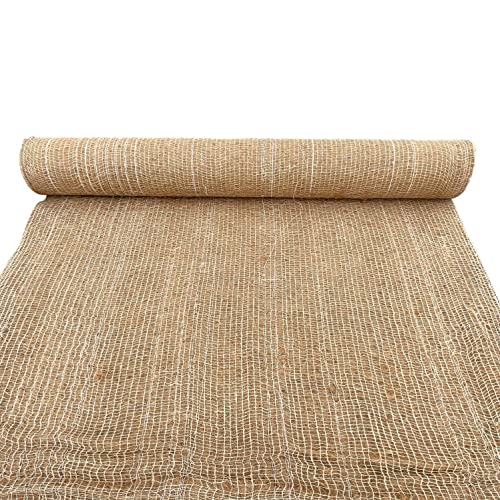Tired of battling weeds in your garden? Ground cover plants might be your new best friends. These low-growing, fast-spreading plants not only add beauty to your landscape but also create a natural barrier against those pesky invaders.
Imagine a garden where you spend less time weeding and more time enjoying the fruits of your labor. With the right ground cover plants, you can achieve just that. They act like a living mulch, shading the soil and outcompeting weeds for nutrients and space. Ready to transform your garden into a low-maintenance paradise? Let’s dive into the best ground cover plants to keep those weeds at bay.
Understanding Ground Cover Plants
Proper use of ground cover plants helps fight weeds effectively.

Benefits in Weed Prevention
Ground cover plants form a dense mat over soil. This shading prevents weed seeds from getting sunlight. They outcompete weeds for nutrients and space. As a result, there’s less need for constant weeding. They also improve soil health by retaining moisture and reducing erosion.
Choosing the Right Fit for Your Garden
Select ground cover plants that suit your climate and soil type. Consider sunlight levels in your garden. For shady spots, try Vinca minor or Pachysandra. If you have a sunny area, use Sedum or creeping Thyme. Match plant height and growth habits to your garden layout. For example, low-growing ground covers work well between stepping stones. Consult local garden centers for best choices.
Best Ground Cover Plants to Prevent Weeds
Ground cover plants can transform your garden while keeping weeds at bay.
Perennial Peanut
Perennial Peanut thrives in warm climates. It provides vibrant green foliage and yellow flowers. This plant is drought-tolerant, needing minimal maintenance. It’s perfect for sunny spots with well-drained soil.
Creeping Thyme
Creeping Thyme forms a dense mat, preventing weed growth. It offers fragrant foliage and purple flowers. Plant it in sunny areas with good drainage. Ideal for rock gardens and pathways.
Ajuga (Bugleweed)
Ajuga quickly covers ground, choking out weeds. It features colorful foliage and blue flowers. It grows well in shaded areas with moist soil. Use it under trees or in shaded garden beds.
Planting and Maintenance Tips
Effective planting and maintenance result in vibrant, weed-free ground cover.
Ground Preparation
Clear all existing weeds and debris. Till the soil to a depth of 6-8 inches. Add compost to improve soil fertility. Ensure proper drainage by amending heavy clay soil with sand.
Planting Techniques
Space plants based on their growth rates. Plant evergreen types closer for year-round coverage. Water the new plants immediately after planting. Mulch around the plants to retain moisture and suppress weeds.
Ongoing Care and Maintenance
Water regularly, especially during dry spells. Trim plants back to control their spread. Fertilize annually with balanced plant food. Remove any invasive weeds immediately to prevent competition.
Potential Challenges and Solutions
Ground cover plants can present challenges even though they help prevent weeds. As a homeowner and home builder, you can address these issues effectively.
Dealing with Persistent Weeds
« Transform Your Space: Discover the Best Green Paints Loved by Pros and Consumers Alike
Top 10 Best Home Decor Websites to Transform Your Space in 2023 »
Persistent weeds emerge among ground covers. For combating them:
- Mulch: Use organic mulch around ground covers. It blocks light and suppresses weed growth.
- Hand-Pull: Regularly pull weeds by hand. Ensure you remove the roots.
- Pre-emergent Herbicides: Apply pre-emergent herbicides. Prevent weed seeds from germinating.
- Dense Planting: Plant ground covers densely. They can outcompete weeds for space and nutrients.
Managing Soil Health
Soil health impacts ground cover success. To maintain it:
- Soil Tests: Conduct soil tests. Identify nutrient deficiencies.
- Amendments: Add compost or organic matter. Improve soil structure and fertility.
- pH Levels: Adjust soil pH. Use lime to raise pH or sulfur to lower it.
- Aeration: Aerate soil periodically. Enhance root penetration and water absorption.
Adapting to Climate Conditions
Climate affects ground cover growth. Adapt accordingly:
- Drought-Tolerant Species: Choose drought-tolerant plants. They survive dry spells with minimal watering.
- Frost-Resistant Varieties: Select frost-resistant ground covers in cold regions. They withstand harsh winters.
- Shade vs. Sun: Match ground covers to your garden’s light conditions. Some thrive in shade, others in full sun.
- Watering Schedule: Adjust watering based on season. Water more in hot weather and less in cooler months.
Addressing these potential challenges ensures your ground covers thrive while keeping weeds at bay.
Conclusion
Choosing the right ground cover plants can make a huge difference in your garden’s health and appearance. By investing a little time in selecting, planting, and maintaining these plants, you’ll enjoy a beautiful, weed-free garden. Remember to address any challenges like persistent weeds and soil health to keep your ground covers thriving. With these tips, you’re well on your way to a lush, low-maintenance landscape that naturally keeps weeds at bay. Happy gardening!











